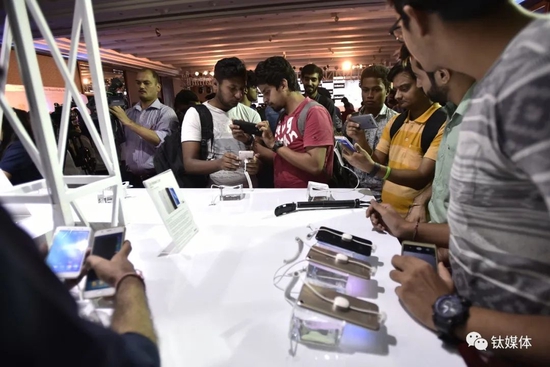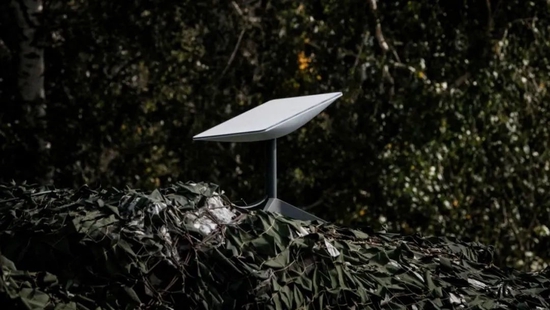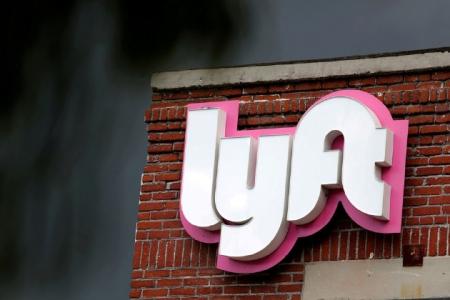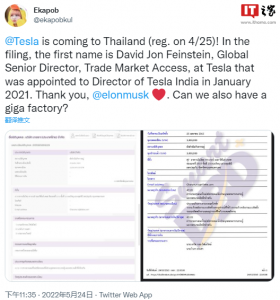your current location is:Home > Finance > depthHomedepth
The "India Dilemma" of Chinese Enterprises
 Image source Visual China
Image source Visual China▎ "In addition to the mobile phone industry, Chinese-funded enterprises in other fields including home appliance manufacturing and industrial manufacturing have encountered scrutiny from India." A person doing venture capital business in India said to the Titanium Media App, currently in India. There are more than 500 Chinese-funded enterprises on the review list.
For more than half a year, almost all mainstream mobile phone brands in China have encountered relevant censorship one after another in India.
In January 2022, the Indian Ministry of Finance accused Xiaomi India of tax evasion of 6.53 billion rupees (about 550 million yuan). The Ministry of Finance of India said that Xiaomi India, which imported Xiaomi mobile phones and mobile phone parts from overseas, failed to report the patent royalties and licensing fees included in the imported products when declaring tariffs, violating India’s customs laws.
In July, the Indian Law Enforcement Bureau raided the production and business premises of vivo and related companies in India on the grounds of “suspected of money laundering”, and blocked 119 relevant bank accounts of vivo in India, and about 390 million yuan of funds were frozen. After that, the Indian Revenue Intelligence Service found that OPPO evaded tariffs of nearly 43.9 billion rupees (about 551 million US dollars), and "has issued a notice to OPPO India, requiring it to pay taxes."
At the same time, as part of the tax evasion investigation, India's tax department on July 15 searched multiple Huawei premises in India and reviewed Huawei India's financial documents, books and company records. On the evening of July 21, Honor CEO Zhao Ming said that the Honor team has withdrawn from India and will take a "very safe way" to conduct business in the Indian market in the future.
Judging from the current signs, India, as one of the most successful countries where domestic mobile phone brands have gone overseas, is now changing. "In addition to the mobile phone industry, Chinese-funded enterprises in other fields, including home appliance manufacturing and industrial manufacturing, have encountered scrutiny from India." Xiang Nan (pseudonym), a person who does venture capital business in India, told the Titanium Media App. More than 500 Chinese-funded companies are on the review list in India.
Tariff controversy at the center of the storm
Taxation is a common problem encountered by domestic mobile phone brands. Among them, the "evasion of tariffs" involved by Xiaomi and OPPO is the core point of dispute: whether the royalty fee should be included in the scope of customs declaration.
In the process of the rise of smartphones as a new industry, a large number of technical standards have also been born. For example, for the main communication technology standards (4G/5G standards) currently used in the mobile phone industry, the intellectual property rights belong to communication technology service providers such as Qualcomm and Ericsson. When a mobile phone brand is using these standards, it requires the latter's license to use it, thus forming a patent license for a smartphone.
According to the Indian Ministry of Finance’s announcement on January 5, the Directorate General of Revenue Intelligence (DRI) of India confirmed from a number of “key persons” including Xiaomi India executives that Xiaomi India had reported to Qualcomm and Beijing Xiaomi Mobile Software Co., Ltd. Payment of royalties and licensing fees, known as royalties.
According to the allegations of the Ministry of Finance of India, when Xiaomi India imported Xiaomi mobile phones and mobile phone parts from overseas, the royalty fee should also be included in the customs declaration, but Xiaomi did not declare it, so it should pay the tax. The tax was calculated from April 1, 2017 to June 30, 2020, with a total of 6.53 billion rupees (about 550 million yuan). Like Xiaomi, OPPO was also accused by India of evading customs duties of 43.9 billion rupees for failing to declare this part of the cost.
On April 27, the Indian Law Enforcement Agency issued an announcement saying that it had seized 55.51 billion rupees (about 4.79 billion yuan) of assets in the bank account of Xiaomi India. Subsequently, Xiaomi sued the Indian Law Enforcement Agency to the local Indian court, while OPPO India voluntarily paid the 4.5 billion rupees tariff difference.
"The Indian Bureau of Law Enforcement is equivalent to China's economic investigation department." Xiang Nan told the Titanium Media App that the reason for the Indian Law Enforcement Bureau to freeze assets is that these companies did not include the patent fee in the import price of the product when they declared the tariff, which caused the tax evasion. However, after Xiaomi sued the Indian Bureau of Enforcement, the judge in charge of the case announced a suspension of the freezing of Xiaomi’s assets.
The Supreme Court of Karnataka, India, also requested on July 5 that the central government of India designate officials to review Xiaomi's complaint and decide within 60 days whether to uphold the punishment against Xiaomi. This means that the two sides will continue to compete on whether the royalty fee should be included in the scope of customs declaration.
Xiaomi has responded to Caixin that whether royalties, including patent license fees, should be included in the price of imported goods, this is a complex technical problem in various countries. Xiaomi will continue to communicate with relevant Indian authorities on this issue.
However, according to the current international mainstream "WTO Valuation Agreement", the price of imported goods should be all fees paid (or payable) for importing the goods. At the same time, Article 8 of the Agreement stipulates that the royalty fee should be subject to customs duties if the following main conditions are met: the fee is related to the imported goods; the importer must pay the fee directly or indirectly; if the goods are to be sold, the fee must be paid. fees, etc.
In China, according to Article 19 of the "China Import and Export Tariff Regulations", which came into effect in January 2004, the fees that should be included in the dutiable value of imported goods include "the buyer must pay the royalties related to the goods". .
Chinese companies face comprehensive scrutiny
In fact, apart from the tariff turmoil encountered by Xiaomi and OPPO, India's tax review of domestic mobile phone brands this time is almost all-round.
Taking vivo as an example, the Indian Law Enforcement Agency raided 48 locations of vivo India and 23 related companies on July 5 for allegedly violating the relevant provisions of the Prevention of Money Laundering Act (PMLA). On July 7, 119 bank accounts related to vivo India were frozen, totaling 4.65 billion rupees (about 386 million yuan), including vivo India's 660 million rupees fixed deposit, 2 kilograms of gold bars and about 730,000 rupees. of cash.
"India's accusations against vivo mainly have two points. One is that vivo's distributors forged identification documents and company addresses; the other is that vivo India has inflated costs and transferred pricing through affiliated companies." Xiang Nan said that in the targeting of In the investigation of Chinese mobile phone brands, India is equivalent to dispatching multiple departments such as industry and commerce, economic investigation, customs, etc. to find problems from different angles.
According to the announcement of India’s Law Enforcement Bureau, the addresses provided by the director of GPICPL, an affiliate of vivo India, do not match the actual addresses. These addresses are actually government buildings and residences of senior officials in India. At the same time, the Indian Enforcement Agency accused vivo India and its affiliates of transferring half of their profits to China, making the Indian business a "loss" in order to avoid paying taxes.
After the Indian government froze bank accounts, vivo also immediately launched a lawsuit against the Indian Law Enforcement Agency. Vivo said the company is cooperating with relevant Indian authorities to provide them with all the information they need. As a responsible company, vivo strictly abides by all local laws and regulations in India.
On July 13, a local Indian court lifted the freeze on vivo’s bank account, but ordered vivo to provide a bank guarantee of $119 million (about 801 million yuan).
In addition to the mobile phone industry, Chinese-funded companies in the fields of electrical appliances, infrastructure, and communication networks also face the same risk of censorship. According to Xiangnan, there are more than 500 Chinese-funded companies on the review list in India. In addition to mobile phone manufacturing, the communications industry, home appliance manufacturing and machinery and equipment manufacturing industries have basically been checked.
"For a search of a Chinese-funded company, the Indian side usually dispatches police number 5 or 600, and some even carry guns."
Xiang Nan said that these reviewers will conduct simultaneous searches of key personnel of the company, upstream and downstream distributors, etc., and some corporate executives will be questioned for five or six consecutive days. During the review period, all electronic equipment, as well as cash and precious metals in employees' homes will be temporarily withheld. At the same time, the review agency will also hire third-party accounting firms and consulting firms to collect various information on the front end of the company.
According to incomplete statistics from the Titanium Media App, since August 2020, in addition to the aforementioned mobile phone brands, Chinese companies including Foxconn, CRRC Yongji Electric Shenzhen Zhenhua Data, ZTE, and Huawei have all encountered scrutiny from India. The common reasons for some companies to be reviewed are related to taxation.
"The relevant tax authorities in India have (always) been very active, with thousands of companies and individuals receiving tax claims every day."
Santosh Pai, a partner in the Delhi branch of Link Legal, a law firm in India, told TMTPost that the government is the largest litigant in India, which means that many companies and individuals need to fight the government legally , including tax issues. This is a common part of doing business in India.
According to Bai Dashan, there are very few successful Chinese companies in India. When the businesses of these Chinese companies develop and become part of the Indian business environment, they will naturally have tax disputes. "Many large domestic Indian companies of similar size have a large in-house legal department and employ several external lawyers to handle cases on a regular basis. So Chinese companies need to get used to dealing with (similar) legal issues."
For "Made in India"
"India's frequent investigation of Chinese enterprises not only disrupts the normal business activities of enterprises and damages their goodwill, but also hinders the improvement of India's business environment and dampens the confidence and willingness of market players from all over the world, including Chinese enterprises, to invest and operate in India. ."
After vivo faced a series of scrutiny, Counselor Wang Xiaojian, spokesperson of the Chinese Embassy in India, answered a reporter's question on the anti-money laundering investigation of vivo India by the Indian Law Enforcement Agency.
Wang Xiaojian said that China is paying close attention to the matter. The Chinese government has always required Chinese companies to operate legally and compliantly overseas, and at the same time firmly supports Chinese companies in safeguarding their legitimate rights and interests. China hopes that the Indian side will investigate and enforce the law in compliance with laws and regulations, and effectively provide a fair, just and non-discriminatory business environment for Chinese enterprises to invest and operate in India.
India's Law Enforcement Agency said it would not comment on the investigation. But other Indian officials have denied the existence of a pattern that specifically targets Chinese companies.
According to the vivo 2021 India Impact Report, vivo entered the Indian market in 2014, and in 2015 responded to the "Made in India" policy call to build a factory in India, located in the Greater Noida region of northern India, and purchased it again in 2018. Expand the factory.
The report shows that vivo's Indian factory has 10,000 employees, and its annual production capacity will reach 60 million units in 2022, and it will export mobile phones from India to overseas. At the same time, 95% of the current supply chain of vivo batteries comes from India; in 2023, it is expected that the proportion of the local supply chain of displays will reach 60%; in 2024, it is expected that the proportion of the local supply chain of chargers will increase from the current 60% to 75%.
"For the collective censorship of domestic mobile phones, I think the core reason is 'Made in India'." Xiang Nan told TMTPost that "Made in India" belongs to India's national strategy, which is mainly divided into two strategies. implement.
One is a phased manufacturing plan. For example, in the early stage of the mobile phone industry, the Indian government has attracted Chinese mobile phone brands such as Xiaomi, OPPO, and vivo to enter the Indian market through various preferential policies. After the brand enters, India will gradually increase the tariff ratio of mobile phone components, allowing foreign mobile phone supply chains to gradually migrate to India. In this way, after several years of development, India has a complete mobile phone supply chain.
According to data from the China Chamber of Commerce in India and the Association of Chinese-funded Mobile Phone Enterprises in India, as of 2021, Chinese mobile phone companies have more than 200 factories and more than 500 trading companies in India, with an investment of more than $3 billion and more than 500,000 jobs. . At the same time, there are 268 mobile phone and parts manufacturing plants in India, and more than 95% of mobile phones sold in India are produced in domestic factories.
According to Canalys data, India will ship 162 million mobile phones in 2021, and Xiaomi will ship 40.5 million in India, with a market share of about 25%, ranking first; South Korea's Samsung and China's vivo ranked second and third, The market share is 19% and 16% respectively. In the Indian smartphone market, Chinese manufacturers have accounted for more than 75% of shipments in the past three years.
Shilpi Jain, research analyst at Counterpoint Research, said that in the first quarter of 2022, about 98% of mobile phones sold in India were produced in India. Almost 100% of mobile phones sold by Chinese mobile phone manufacturers in India are produced in India. Samsung Electronics had 97 percent, and Apple had nearly 60 percent.
Another is the industry production incentive plan. At present, India has introduced relevant economic incentive plans for more than ten industries including semiconductors, new energy vehicles, solar photovoltaic modules and white goods. For example, for the semiconductor industry chain, the Indian government approved an incentive plan worth about US$10 billion on December 15 last year, attracting large semiconductor manufacturers around the world to use India as a production base.
In fact, as early as 2019, the Indian government revised the "National Electronics Policy" issued in 2012, which aims to promote the development of India's electronic system design and manufacturing industry, encourage and promote the development of core components, and promote India to become a leader in the industry. Global Center. The Modi government of India has proposed to achieve the value chain turnover of electronic system design and manufacturing to reach US$400 billion by 2025, and to make India a global leader in electronic manufacturing services by further increasing the added value of electronic product manufacturing.
"When India has a stronger and stronger voice in the mobile phone industry chain, in order to support local brands, it will inevitably suppress overseas mobile phone companies." Xiang Nan said that even in the 5G network business, such as Huawei and ZTE Companies are also excluded.
A Huawei insider revealed to Titanium Media that Ren Zhengfei once mentioned at an internal meeting that "Huawei will strategically abandon several markets, and India is one of them." The person also said that the unit price of the Indian mobile phone market is low, and Huawei Compared with Xiaomi, it has no competitive advantage and is not worth investing in. At present, Huawei's terminal products and related sales personnel have completely withdrawn from the market, and the after-sales service department is also gradually withdrawing.
According to data from the Ministry of Commerce, in 2020, direct investment by Chinese companies in India was US$210 million, a year-on-year decrease of 61.6%; in 2021, direct investment in India was US$63.18 million, a year-on-year decrease of 68.3%.
"Compared with previous years, the Indian market that Chinese-funded enterprises are now facing has undergone significant changes." Xiang Nan said that from a macro perspective, there are several channels for economic exchanges between India and China, such as direct investment and securities investment. , engineering projects, etc. are basically closed. The only thing that is still normal now is almost only service trade.
related articles
Article Comments (0)
- This article has not received comments yet, hurry up and grab the first frame~













